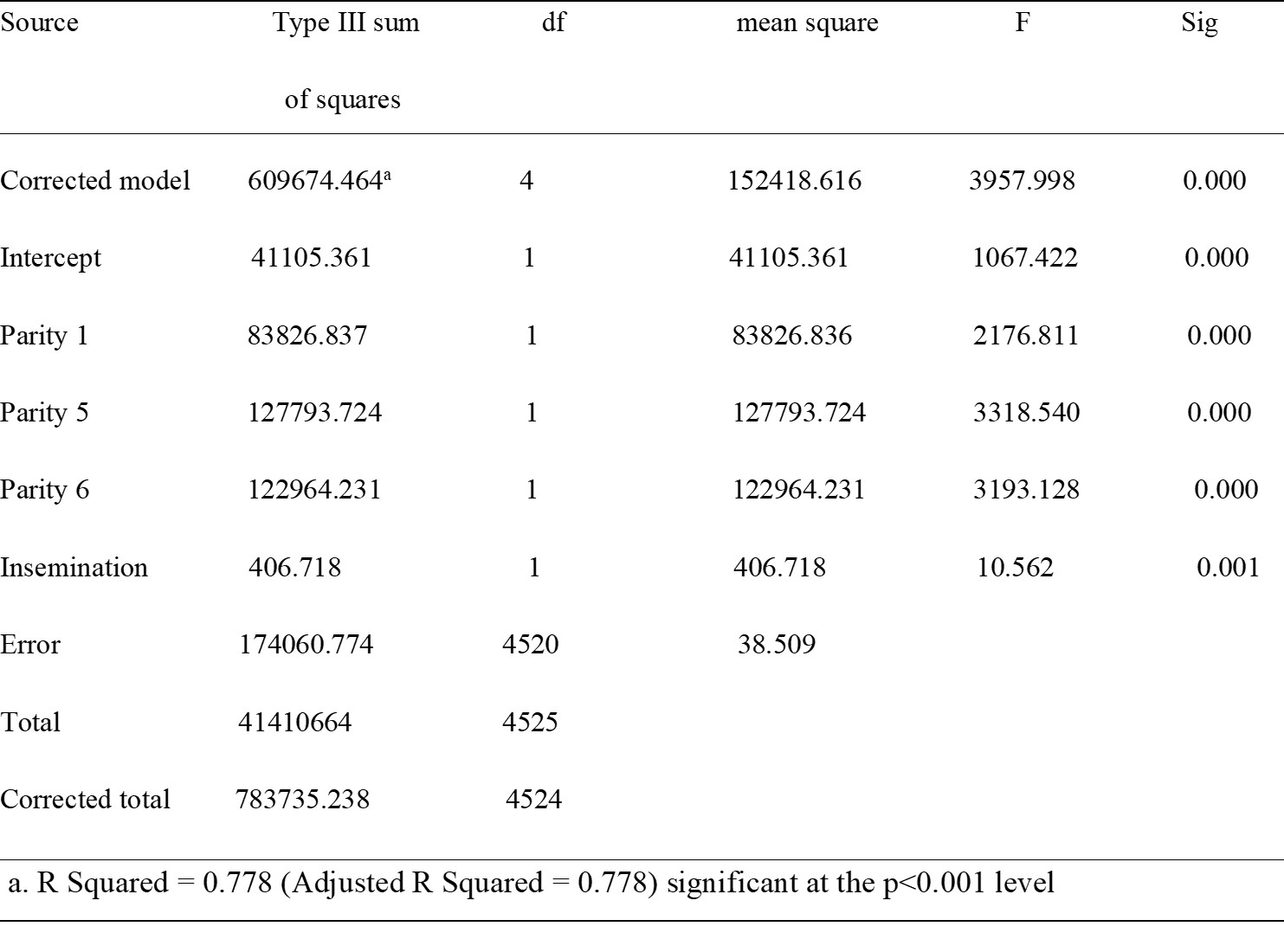



Effect of first versus second oestrus insemination on gilt lifetime productivity
New research shows a significance difference in lifetime total born performance of gilts bred at first oestrus and second oestrus.Gilts constitute a significant proportion of the breeding females (20 to 25 percent) in most herds, and decisions made on gilts are likely to have a significant effect on overall herd performance and profitability (Sporke, 2005). Several studies have evaluated the influence of age, weight, backfat thickness, nutrition, boar exposure, genetics and seasonality on the attainment of puberty and reproductive performance in gilts (Bidanel et al., 1996; Tummaruk et al., 2009; Wettere et al., 2006). The aim of this study was to compare Lifetime Reproductive performance comprising of lifetime total born piglets of gilts initially bred on first observed oestrus with that of gilts bred on second observed oestrus, up to parity 6 of their removal from the herd.
The study
Data consisted of 4,525 F1 Landrace x Yorkshire gilts entered in the herds from 1 January 2014 until 31 July 2016 in the Midwest US. The individual records of all sows which presently have been culled were used, so that their entire productive life was included in this analysis. Analysis was done using the GLM procedure of IBM SPSS version 25.
Results
The results showed a significance difference (p<0.001) (table 2) in lifetime total born performance of gilts bred at first oestrus (mean 93.9) and second oestrus (mean 95.7) (table 1). The findings in this study favour the second oestrus breeding with an overall increased lifetime total born of 1.57 more pigs compared to first oestrus breeding when observation is made up to Parity 6.

© Malanda Joab

© Malanda Joab
Discussion
The current swine industry has continuously pushed for increased production in terms of total born pigs. Our results indicate that gilts inseminated on second observed oestrus produced 1.57 more pigs per lifetime as compared to those inseminated on first observed oestrus (table 1). The significant (p<0.001) difference of lifetime total pigs seen in parity 1, 5 and 6 (table 2) could be explained by the fact that P1s with small uterine capacity tend to have a low total born in their first reproductive performance. As P1s continue to grow there is an increase in uterine size which increases the number of offspring obtained because the uterine horn length is positively correlated with ovulation rate (Chen et al., 1993; Vianna et al., 2004) hence uterine size is an important limiting factor affecting litter size at birth. Consequently, a reduced total born farrowing productivity is expected in P5 and P6 as an indicator of decreased farrowing productivity performance with increase in age.
Modern swine production has become highly competitive and producers continuously seek for increased production with emphasis on cost reduction. The substantial amount of gilts breed on first oestrus (45.8 percent) (table 1) could be explained by the fact that, maintaining gilts until second observed oestrus is viewed as a costly venture since there is a requirement of feed and accommodation for approximately 21 additional days before breeding, hence swine producers could aim at cutting costs by inseminating the gilts on first oestrus. Furthermore, modern US swine production has been experiencing an annual increasing culling rate of up to 50 percent (Hoge and Bates, 2011). Coupled with maintaining favourable production schedules, this results to a larger proportion of gilts being bred to replace the culled sows in production as early as possible.
Conclusion
Producers in piglet producing herds could re-examine their decisions for increased productivity by promoting many gilts into second oestrus breeding for increased lifetime total born as shown from this study. Deciding whether to uphold first or second oestrus breeding as an initiation of a gilt in her reproductive life has been shown to have a significant (p<0.001) on lifetime total born with 1.57 more lifetime pigs born for gilts inseminated on their second oestrus. The findings in this study provide valuable information and add to scientific work which swine producers and veterinarians can directly apply for practice and productivity in the swine industry.
| References | ||||
|---|---|---|---|---|
| Bidanel J. P., J Gruand and C. Legault. | ||||
| (1996) | Genetic variability of age and weight at puberty, ovulation rate and embryo survival in gilts and relations with production traits.. Genet Selection Evolution | 28:103-115 | ||
| Chen ZY, Dziuk PJ | ||||
| (1993) | Influence of initial length of uterus per embryo and gestation stage on prenatal survival, development, and sex ratio in the pig.. Journal of Animal Science | 71:1895-1901 | ||
| Hoge MD and Bates RO | ||||
| (2011) | Developmental factors that influence sow longevity.. Journal of Animal Science | 89:1238–1245 | ||
| Sporke J | ||||
| (2005) | Gilt Development Programs in North and South America. American Association of Swine Veterinarians (AASV) | pp. 11–16 | Toronto, Canada | |
| Tummaruk P, Tantasuparuk W, Techakumphu M, Kunavongkrit A | ||||
| (2009) | The association between growth rate, body weight, backfat thickness and age at first observed oestrus in crossbred Landrace × Yorkshire gilts.. Animal Reproduction Science | 110:108-122 | ||
| Vianna WL, Pinese ME, de Campos Rosseto A, Bombonato PP, Rodrigues PHM, de Sant’Anna Moretti A | ||||
| (2004) | Relationship between prenatal survival rate at 70 days of gestation and morphometric parameters of vagina, uterus and placenta in gilts.. Reprod Domest Anim. | 39:381-384 | ||
| Wettere WH, Revell DK, Mitchell M, Hughes PE | ||||
| (2006) | Increasing the age of gilts at first boar contact improves the timing and synchrony of the pubertal response but does not affect potential litter size.. Animal Reproduction Science | 95:97-106 |








